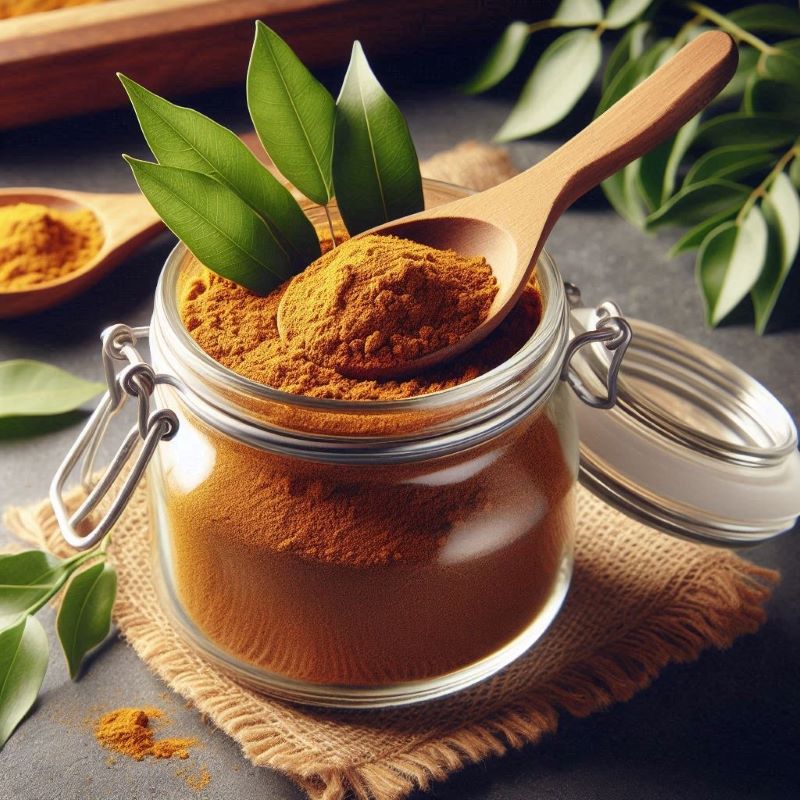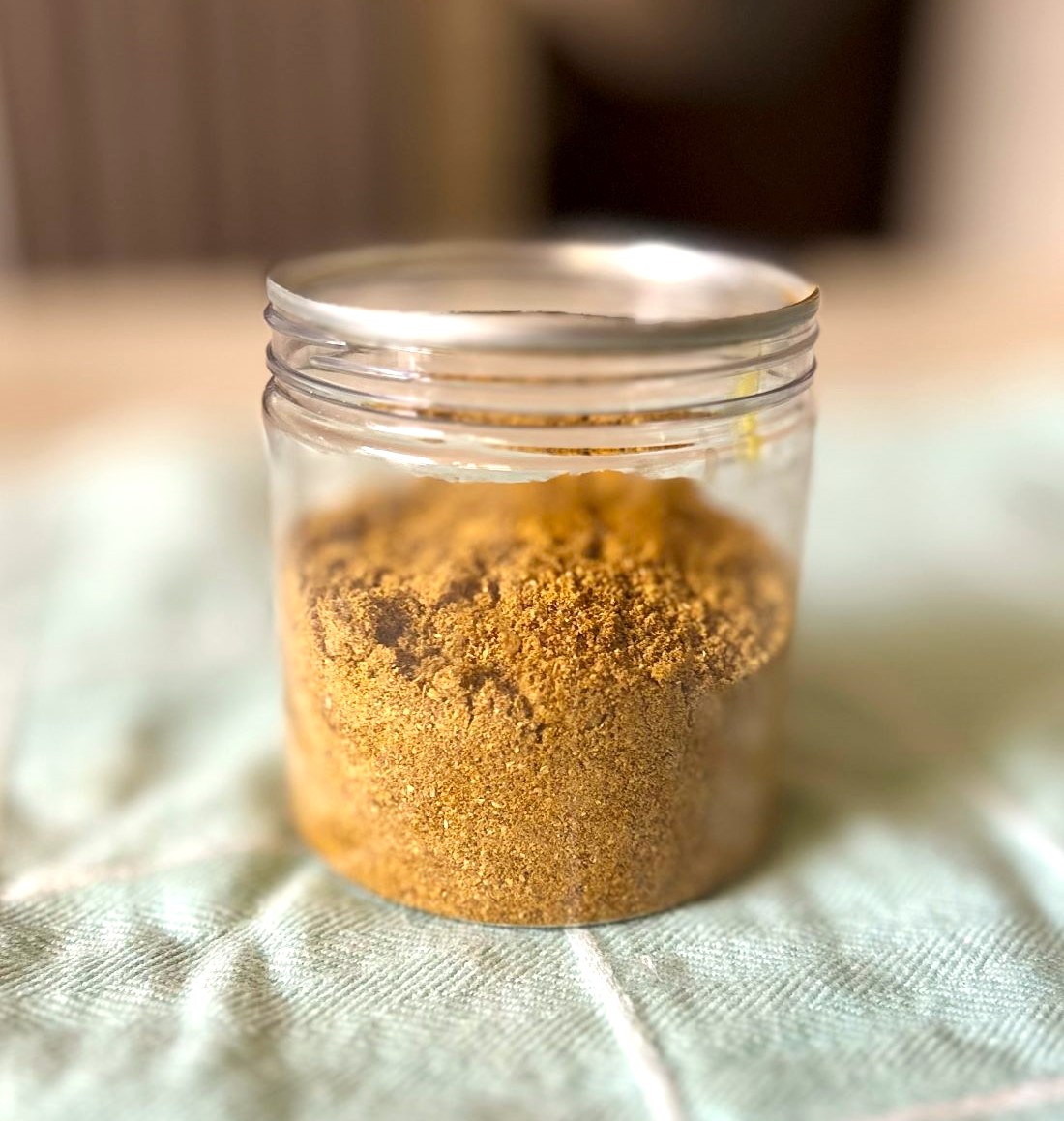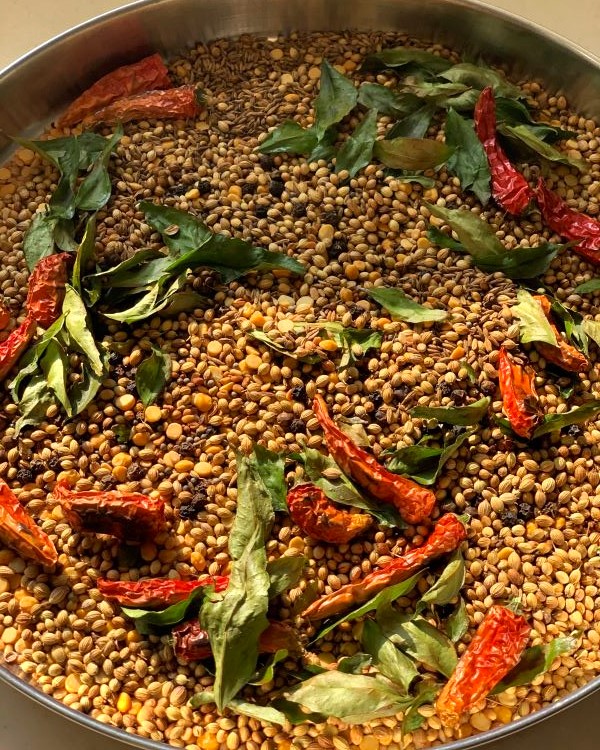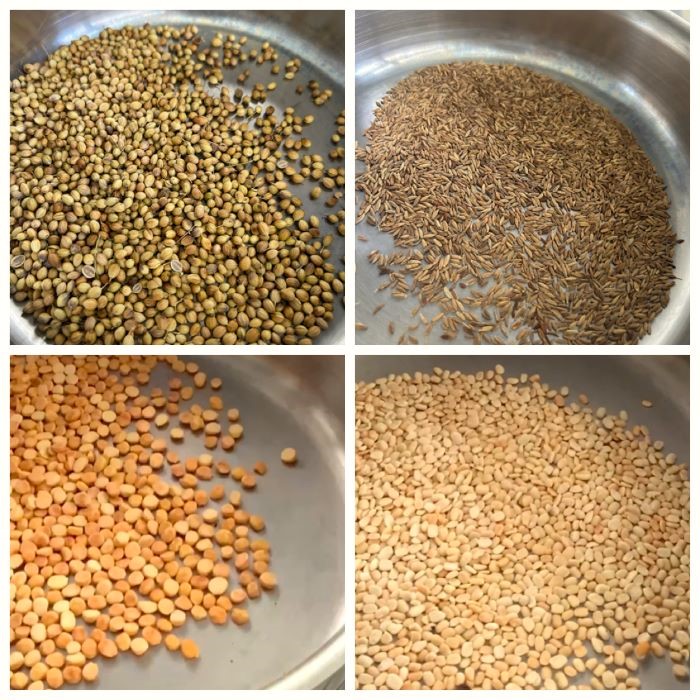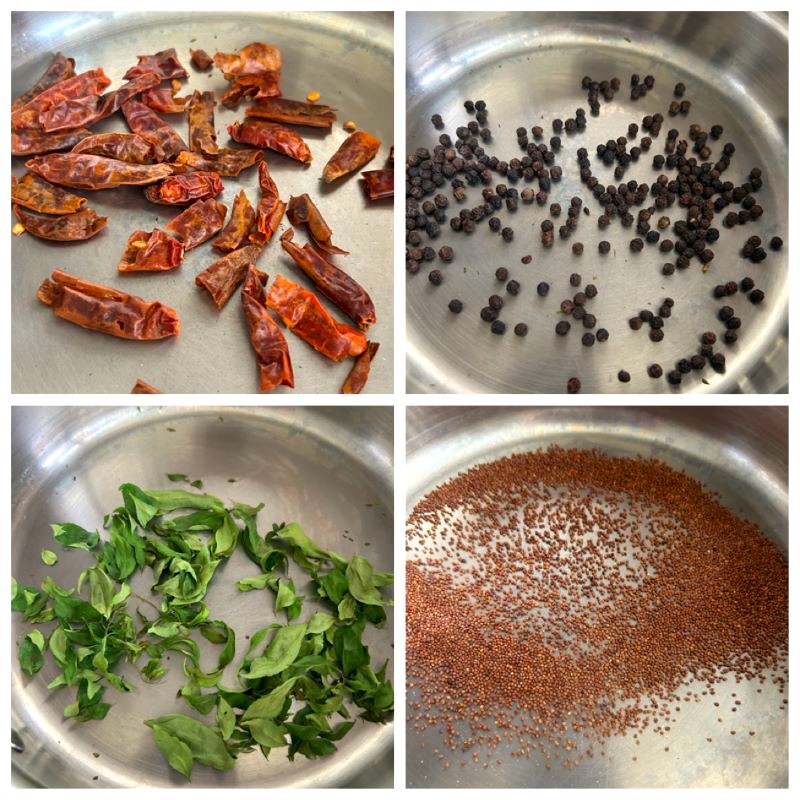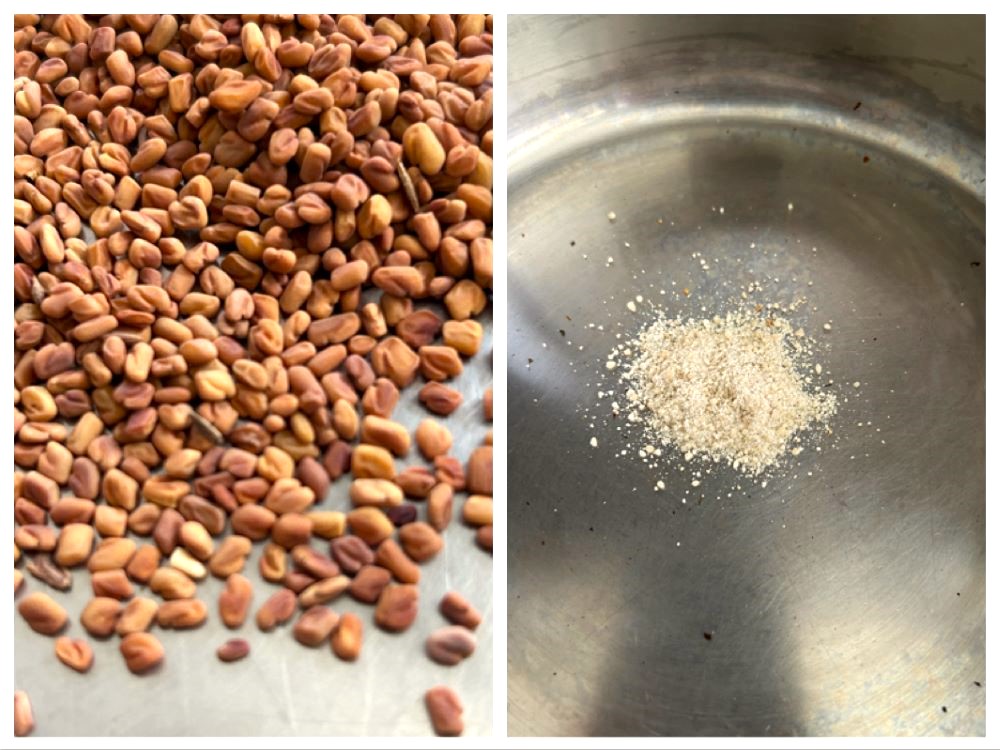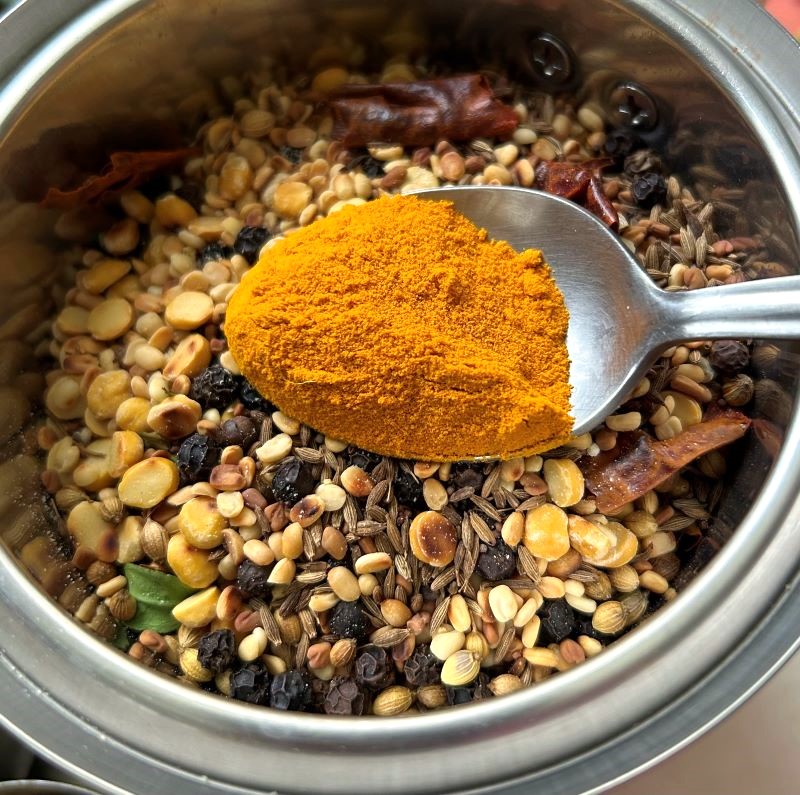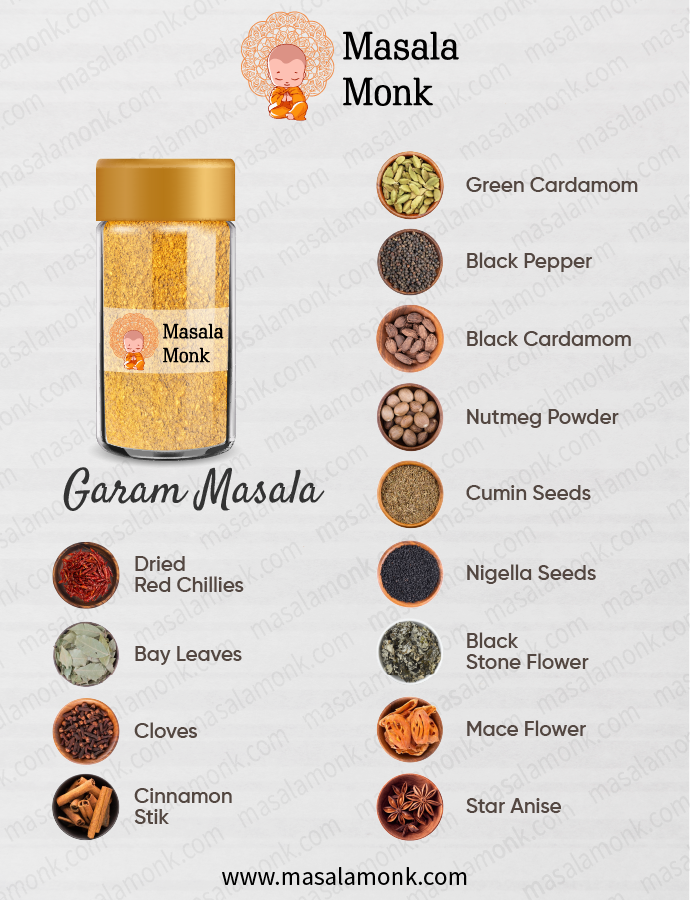
Using homemade masala can elevate your dishes to the next level. Garam masala powder adds an earthy flavor to your meals. Whether it’s curry, biryani, or even cookies and cakes, a pinch of garam masala can enhance the taste beautifully. You will find that every region and every family has their own traditional recipe for Garam Masala, which gets passed down from generation to generation
While packets of garam masala are easily available in every store, there is something special about homemade garam masala, Freshly ground homemade Garam Masala has an un-matched aroma and flavor. So let’s see homemade garam masala recipe.
Ingredients:
- Green Cardamom
- Black Pepper
- Black Cardamom
- Nutmeg Powder
- Cumin Seeds
- Nigella Seeds
- Dried Red Chillies
- Bay Leaves
- Cloves
- Cinnamon Sticks
- Black Stone Flower
- Mace Flower
- Star Anise
Method:
Collect all the spices listed above. Ensure they are fresh and of high quality for the best flavor. Measure out each spice according to your taste preference. A general guideline is to use equal parts of most spices, with a slightly lesser amount of potent ones like cloves and black cardamom.
Heat a large skillet or pan over medium heat. Add all the whole spices (green cardamom, black cardamom, black pepper, cumin seeds, nigella seeds, dried red chillies, bay leaves, cloves, cinnamon sticks, black stone flower, mace flower, and star anise).
Stir the spices continuously to prevent burning. Roast them until they become fragrant, usually about 3-5 minutes. Once roasted, transfer the spices to a plate and allow them to cool completely.
Once the spices are cooled, transfer them to a spice grinder or a high-speed blender. Grind them into a fine powder. You may need to do this in batches depending on the size of your grinder. Once ground, add the nutmeg powder to the mixture and give it a final blend to ensure everything is well combined.
Transfer the freshly ground garam masala to an airtight container. Store it in a cool, dark place to retain its flavor and aroma. It’s best to use the garam masala within a few months for the best taste.
Usage:
Garam Masala can be used in a variety of dishes:
Curries: Add a teaspoon towards the end of cooking to enhance the flavor of your curry. If you like bharwa vegetables or love using bharwa masala you can try masala monk’s Bharwa Masala. A generous stuffing of bharwa masala will turn the oh so boring vegetables into surprisingly delicious For the best stuffed karele, baingan, bhindi, tori or tinde Bharwa Masala by Masala Monk Handpicked whole spices are roasted and ground at home to get the perfect consistency and extract the best flavours and textures.
Marinades: Mix it with yogurt and lemon juice for a delicious marinade for meats and vegetables.
Soups and Stews: Sprinkle a bit into your soups and stews for a warm, spicy kick.
Rice Dishes: Use it in biryanis and pulaos for that authentic taste.
Making garam masala at home is a simple yet rewarding process. The aroma and flavor of freshly ground spices can elevate your dishes to a new level. Try this homemade garam masala recipe and add a touch of authentic Indian flavor to your cooking. Don’t forget to share your experience and feedback in the comments below.
If you try this recipe, do give us a shout out. Just click a picture and tag us on @masala.monk or use the hashtag #MasalaMonkRecipe and share on Instagram and Facebook. We would love to hear from you. 🙂
Happy cooking!

